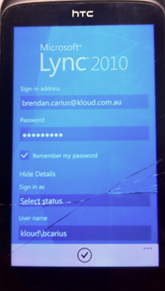Lync 2010 Mobility – Push Notifications
Through reverse engineering here is my take on how Lync Mobility push notifications function for Apple and Windows Phone devices. This article assumes that push notifications is configured and the user is granted the policy to permit push notification (default). Push notifications is only applicable when the application is running in the background (inactive). When the Lync Mobile application is active, HTTPS communications via the Reverse Proxy is used. As you’ll see below, the reverse proxy continues to be the transport for IM conversations, and the push notification is simply the notification service for the device.… [Keep reading] “Lync 2010 Mobility – Push Notifications”

